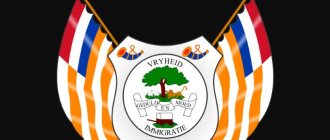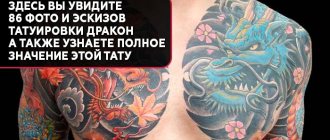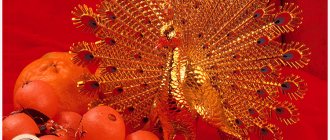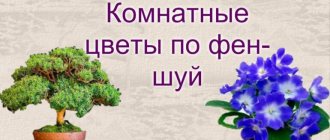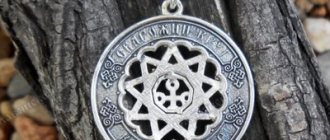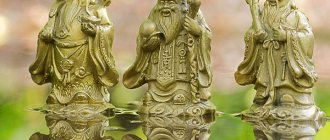In Sanskrit, the infinity knot is called “srivatsa”, which means “beloved Sri Lakshmi” - the wife of the god Vishnu. According to legend, Vishnu has a curl of hair growing on his chest in the shape of an infinity knot.
An alternative name for the curl of chest hair is “nandyavarta”, or “curl of happiness”, it is drawn as a swastika symbol or a Greek cross of hooks (Greek gammadion)1.
The Buddhist infinity knot is one of the Eight Noble Symbols of Buddhism - Ashtamangala:
- a good umbrella symbolizes the nobility of origin and protects against defilements;
- two golden fish symbolize the end of suffering, spiritual liberation;
- a precious vase is a symbol of the realization of all desires, both worldly and spiritual;
- lotus means non-attachment to samsara, but presence in it untainted;
- a white shell with a curl to the right means the sounds of the Buddha's words spreading around and awakening living beings from ignorance;
- the endless knot means the complete acquisition of the Immeasurable Virtues and the Five Kinds of Primordial Wisdom;
- the banner of victory is a symbol of the victory of the Buddha’s Teachings over ignorance, old age, illness and death;
- wheel of dharma: turning the wheel means preaching the Teachings of the Buddha, which frees living beings from obscurations.
Tibetan infinity knot.
The knot is perhaps one of the most ancient magical symbols. At the same time, its essence is surprisingly dual: both tying a knot and the process of untying it have a special meaning. Moreover, the first is associated with capturing, attracting something, and the second with releasing, while the node itself is capable of preserving energy or an idea.
Of great importance is the purpose for which it is tied, because with its help you can equally attract happiness and good luck, or you can cause, for example, a crop failure. The Tibetan knot (Srivatsa Skt. Shrivatsa, Tib. Dpal be'u, other names - “Knot of Eternity”, “Knot of Infinity”, “Knot of Happiness”) is one of the eight auspicious symbols of Tibetan Buddhism. The infinity knot symbolizes the desire to understand the secrets of immortality, eternal youth and beauty. However, this symbol takes on a deeper meaning in the Vajrayana system (a kind of occult Buddhism. In Tibet, the Vajrayana teaching is considered the crown of veneration of the Buddha. According to the Vajrayana method, the infinity knot is a symbol of karmic consequences (a kind of universal justice. Any action will have consequences. Unraveling the knot on one end, you get confused at the other. That is, our actions, good or bad, will sooner or later still affect us. The very form of this symbol shows the rebirths of a person and his karmic connections with the world and the universe. The Tibetan endless knot personifies the changeable nature of time, the impermanence and interconnectedness of all things in nature, as well as the unity of wisdom and compassion. It is also a symbol of the interdependence of all phenomena and living beings in the universe. It is only natural that the infinity knot becomes a symbol of love. How to use the symbol. The infinity knot is most often used today as an amulet. It can be made from metal wire or tape, knitted from cord, or simply drawn on paper. You can buy it in a store or make it with your own hands (this way the talisman will work more efficiently. Magical decoration. In the form of a pendant or pendant on a bracelet, an infinity knot protects its owner from imprudent actions and opens up power over time. A person who wears such a symbol, able to accurately determine goals for himself and achieve them, bypassing all obstacles. Sometimes in jewelry, the knot of happiness is combined with other magical symbols, enhancing their meaning. Interesting is its combination with the oroboro (the ring-shaped figure of a snake biting its own tail) - the emblem of eternity, indivisibility, and also the cyclical nature of time. Feng Shui. In China, the mystical infinity knot is called the knot of happiness. It is often used in Feng Shui as a traditional symbol of good luck, happiness, success and prosperity. Therefore, it is recommended to be used in carvings, embroidery, patterns on carpets and other interior items If it is combined with another symbol or amulet, it gives the latter unlimited action. For example, tied to a money talisman, it ensures a continuous flow of money; with amulets for love, health, creative energy, it means inexhaustible resources of these benefits. Source of happiness. To maximize the interaction of the symbol with all aspects of life that are important to you, you can place its image or the plexus itself in a frame and hang it on the wall in your home or office. Ornaments in the form of ribbon knots or plexuses symbolize longevity, happiness, and following your destiny. How to weave an infinity knot. The knot is quite complex, so study the pattern before you start weaving. 1. Take a thread 3 m long. Pin it onto the pillow in the middle, form a loop at each end (see Fig. 1, vertical loops), pin it. 2. Take the right end of the thread, make a long loop out of it and thread it through all the vertical loops that were formed in the previous step. The loop will pass through each of them according to the pattern “under the Thread - above the Thread” (see the same Fig. 1. pin. Now make another long loop from the same thread, pass it through the vertical loops, like the first, pin. 3 . now we take the left end and lead it along the top of the knot, twisting all the vertically running threads, except for the rightmost loop - the eye. In this case, the thread will pass first over the loops, and then under them. We pin it. Once again we wind the same thread to the right (at this forms a loop on the left) and repeat the same at the bottom of the knot. 4. Now you need to additionally pass the left end of the thread along the vertical of the knot. The main principle to remember in this case: When the thread goes up, it passes under 1 thread, over 3 , again under 1, and again over 3 threads, and when the thread goes down, it goes under 2, over 1, under 3, over 1 and under 1 thread. Remember this sequence for yourself ("under One - over Three - under One - over Three - and Down - under Two - over One - under Three - over - under"), this will simplify things. 1 - 3 - 1 - 3 - 2 - 1 - 3 - 1 - 1. 5. Gently tighten the knot using the outer loops and loose ends. All that remains is to equalize the size of the petals by pulling up the corresponding sections of the thread (go from the middle of the knot in turn in different directions.
When are knots used and what do they mean?
The knots themselves contain an interesting, but at the same time simple, subtext. In Buddhism, tying a knot and untying it even becomes a certain ritual.
It is believed that by tying it, we launch the flywheel of karma and enclose energy in this knot. If the energy is positive, then it will lead to favorable consequences and contain a good wish. When tying, we seem to acquire, capture something.
When tying a knot with your own hands, you can read mantras - this will enhance the effect and become an excellent amulet.
The node preserves the idea, the plan. The opposite action occurs when untying - we release energy, get rid of unnecessary things, let go of the past.
Knots are often tied on rosaries. 108 beads are strung on a thread or string. Above them there should be the main, 109th bead, which symbolizes the head of Buddha. Then you need to make the knot correctly so that the beads close together.
Perhaps most often in Buddhism, knots are found in the list of eight noble symbols of the dharma:
- umbrella;
- vase;
- sink;
- goldfish;
- victory banner;
- lotus bud;
- eight-spoke wheel;
- infinity knot.
Do-it-yourself longevity knot.
Knot of Longevity / Eternity / Infinity / Happiness - the names of the Tibetan Shrivatsa knot (Sanskrit Shrivatsa, Tib. Dpal be'u). It is one of the eight auspicious symbols of Tibetan Buddhism and embodies the desire to understand the secrets of immortality, eternal beauty and youth. The continuity of this knot forms the idea of constancy and patience in achieving a good goal, and the complexity of tying indicates that the path of knowledge is never easy.
In the philosophical Buddhist concept, the Knot indicates the inseparability of wisdom and compassion - the main qualities necessary to break out of the circle of contradictions in which our lives revolve.
The knot, like a talisman, begins to “work” only if a person uses it consciously. It is not enough to understand its meaning, keep your attention on it and “broadcast” your good intentions and aspirations through it. It is important to make efforts to realize your ideas and desires. After all, the Knot is not a magic wand, but a faithful assistant that gives impetus to the efforts of its owner.
February 9-10. Growing Moon in Leo. Rejoice, remain optimistic, even if the events of these days are not very conducive to this. Remember - you are being tested for endurance. Your luck and success in the coming months depend on how you pass this exam.
I advise you to make a Longevity Knot these days. This magical amulet without end and beginning appeared in Tibet about 2500 years ago. Its refined magic preserves what is most valuable to the owner of the amulet. The node is a completely balanced system that a person needs for a healthy and happy life. You can purchase a finished product and charge it from a professional, but a hand-made amulet has the greatest power. The Longevity Knot can be embroidered on linen, woven from lace, or at least simply drawn with a red felt-tip pen on green or blue paper, saying: “Save and preserve!”, and then carried with you. (Shaman Dardo Cousteau, Oracle No. 2 (February)/2017)
Series of messages "Amulets": Part 1 - Master classes on folk needlework. Part 2 - Protecting an apartment (house) using the Lo-shu square. ... Part 13 - Button cards. Part 14 - Bird of happiness. Part 15 - Longevity/Happiness Knot. Part 16 - Amulet of happiness and ritual.
Effect on humans
With the help of such a talisman, a person can change his life for the better, understand himself, learn to analyze his actions, so he can realize what exactly he is missing in life and how to achieve it. With the help of an amulet you can find the right path and make the most correct decision.
With the help of a talisman, a person can learn to analyze his actions
When choosing such a talisman, you should take into account that it will constantly encourage you to act and seek the truth. A person will be able to discover new abilities in himself and will strive for self-realization. Also, the longevity knot represents harmonious relationships in a married couple.
The infinity knot and its meaning.
The Tibetan knot (Srivatsa Skt. Shrivatsa, Tib. Dpal be'u, other names - “knot of eternity”, “knot of infinity”, “knot of happiness”) is one of the eight auspicious symbols of Tibetan Buddhism (hence its second name - Tibetan knot) and embodies the desire to understand the secrets of immortality, eternal beauty and youth.
That is, the continuous weaving of this knot forms the idea of constancy and patience in achieving a good goal, and the complexity of tying indicates that the path of knowledge is never easy. In the form of a pendant or pendant on a bracelet, the knot protects its owner from imprudent actions and reveals power over time. A person who wears such a symbol is able to accurately determine goals for himself and achieve them, bypassing all obstacles. Sometimes in jewelry the Knot of Happiness is combined with other magical symbols, enhancing their meaning. The very form of this symbol shows the rebirths of man and his karmic connections with the world and the universe. The Tibetan endless knot represents the changing nature of time, the impermanence and interconnectedness of all things in nature, as well as the unity of wisdom and compassion.
It is also a symbol of the interdependence of all phenomena and living beings in the Universe. It is quite natural that the Infinity Knot becomes a symbol of love.
The Mystic Knot is often used in Feng Shui as a traditional symbol of good luck, happiness, success and prosperity.
Happiness Knot
The happiness knot is also called the infinity knot or the endless knot. This is an ancient magical symbol that has a dual nature. Its tying is identified with attracting something, and its untying is identified with the release of energy, liberation from something. It is believed that a tied knot can store something, for example, inspiration, happiness, prosperity.
In Tibetan Buddhism, the endless knot is considered one of the eight auspicious symbols. It symbolizes immortality, eternal youth and beauty. Another meaning is karmic justice. Every action generates a reaction, tangling the knot on one side will unravel the knot on the other end. It denotes the mutual dependence of everything that exists in our world. An endless knot can represent a happy marriage and strong love.
In the teachings of Feng Shui, the endless knot is called the knot of happiness. It is a traditional Chinese symbol of good luck, happiness, prosperity and success. In China, it can be seen in wood carvings, carpet patterns and other interior items. Ribbon or rope ornaments in general, according to Feng Shui, symbolize longevity, health and happiness.
Interestingly, the happiness knot is often combined with other symbols. For example, a money symbol tied to an endless node promises a powerful flow of monetary energy that will never run out. Together with a horseshoe, this nouz will attract almost endless luck. It can be either a home talisman or a personal one. It is believed that in the form of a pendant or other decoration, such a talisman gives power over time and helps to achieve goals, successfully bypassing all obstacles on the way to them.
How to make
To make a unit, you need to stock up on the following materials:
- cords or threads;
- scissors;
- candle;
- matches.
Cords or threads are used in various thicknesses and lengths
Cords or threads are used in various thicknesses and lengths. This depends on the size of the node itself. If you plan to make a large knot, it is better to use curtain cord. Its ends are wrapped with tape, as they will unwind. If you plan to weave a small knot, you can take a thin waxed or cotton cord. To make the knot look more elegant, you can take a decorative rope - finishing braid, soutache, leather ropes.
Matches are needed to burn the ends of the cord, since many of them come untied. It is better to wrap the ends of the cotton cord with tape. Additionally, you can use various jewelry elements - beads, seed beads, pendants. This amulet decoration will look especially beautiful above the front door, above the windowsill, in the corner of the room.
Tibetan knot: legends about its appearance
One says that the knot was presented as a gift to the sage of the Shakya clan as the eighth symbol, along with seven more gifts - golden fish, a precious vessel, a conch shell, a lotus flower, an umbrella, a wheel and a victory banner. The second legend claims that the knot was given to the Buddha by God Ganesha to decorate his heart. There is a third opinion about the appearance of the node. The Tibetan knot is nothing more than an improved symbol of Ancient Egypt, transferred to India - kundalini (2 intertwined snakes biting their own tail.)
You can buy a knot and draw it on a piece of paper, but it’s better to do it yourself, investing energy and meaning into why you are doing it. The meaning is twofold. The finished knot can be either tightened or unraveled on one side, or loosened or braided on the other, thereby releasing energy or confining it. You can make a knot for love, for business, or for health. Whatever a person wants, with his desires and aspirations. And the node will help.
Endless knot, how to make. How to use the symbol?
The infinity knot is most often used today as an amulet. It can be made from metal wire or tape, knitted from cord, or simply drawn on paper. You can buy it in a store or make it yourself (this way the talisman will work more efficiently).
A variant of the “endless knot”, used as a talisman. It symbolizes the boundlessness and continuity of the world and, in fact, is a multiplied “eight” - a symbol of infinity. This sign can be used to decorate your home or carried with you - it can attract good luck both in love and in business. It’s especially good if you try to make this knot yourself or at least draw it.
In the form of a pendant or pendant on a bracelet, the infinity knot protects its owner from imprudent actions and reveals power over time.
A person who wears such a symbol is able to accurately determine goals for himself and achieve them, bypassing all obstacles.
How to weave correctly
There are certain rules that must be followed when making a talisman:
The male amulet is charged with solar energy, and the female amulet is charged with lunar energy.
- The woven knot must be charged using solar or lunar energy. The talisman, which is intended for a man, is best charged using solar energy. It’s better to charge a woman’s amulet with lunar energy.
- It is best to weave a knot outdoors, in the open air. If this is not possible, you need to keep the threads or lace outside for some time.
- The optimal manufacturing period is the waxing moon, closer to the full moon.
- During the weaving process, nothing and no one should distract from the work. It is recommended to mentally say requests for help.
Tibetan infinity knot. Its full meaning.
Tibetan infinity knot
The knot is perhaps one of the most ancient magical symbols. At the same time, its essence is surprisingly dual: both tying a knot and the process of untying it have a special meaning. Moreover, the first is associated with capturing, attracting something, and the second with releasing, while the node itself is capable of preserving energy or an idea.
Of great importance is the purpose for which it is tied, because with its help you can equally attract happiness and good luck, or you can cause, for example, a crop failure.
The Tibetan knot (Srivatsa in Skt. Shrivatsa, Tib. Dpal be'u, other names - “knot of eternity”, “knot of infinity”, “knot of happiness”) is one of the eight auspicious symbols of Tibetan Buddhism.
The infinity knot symbolizes the desire to understand the secrets of immortality, eternal youth and beauty.
However, this symbol takes on a deeper meaning in the Vajrayana system (a kind of occult Buddhism). In Tibet, the Vajrayana teachings are considered the crown of veneration of Buddha.
According to the Vajrayana method, the Infinity Knot is a symbol of karmic consequences (a kind of universal justice). Any action will have consequences. When you unravel a knot at one end, you tangle it at the other. Those. our actions, good or bad, will still affect us sooner or later.
The very form of this symbol shows the rebirths of man and his karmic connections with the world and the universe. The Tibetan endless knot represents the changing nature of time, the impermanence and interconnectedness of all things in nature, as well as the unity of wisdom and compassion.
It is also a symbol of the interdependence of all phenomena and living beings in the Universe. It is only natural that the Infinity Knot becomes a symbol of love.
How to use the symbol
The infinity knot is most often used today as an amulet. It can be made from metal wire or tape, knitted from cord, or simply drawn on paper. You can buy it in a store or make it yourself (this way the talisman will work more efficiently).
Magic decoration
In the form of a pendant or pendant on a bracelet, the infinity knot protects its owner from imprudent actions and reveals power over time. A person who wears such a symbol is able to accurately determine goals for himself and achieve them, bypassing all obstacles.
Sometimes in jewelry the Knot of Happiness is combined with other magical symbols, enhancing their meaning. It is interesting to combine it with the oroboro (the ring-shaped figure of a snake biting its own tail) - an emblem of eternity, indivisibility, and the cyclical nature of time.
Feng Shui
In China, the mystical infinity knot is called the happiness knot. It is often used in Feng Shui as a traditional symbol of good luck, happiness, success and prosperity. Therefore, it is recommended to use it in carvings, embroidery, patterns on carpets and other interior items.
If it is combined with another symbol or amulet, it gives the latter unlimited action. For example, tied to a money talisman, it ensures a continuous flow of money; with amulets for love, health, creative energy, it means inexhaustible resources of these benefits.
Source of happiness
To maximize the interaction of the symbol with all aspects of life that are important to you, you can place its image or the plexus itself in a frame and hang it on the wall in your home or office. Ornaments in the form of ribbon knots or plexuses symbolize longevity, happiness, and following your destiny.
How to Weave an Infinity Knot
The knot is quite complex, so study the pattern before you start weaving.
1. Take a thread 3m long. Pin it onto the pillow in the middle, form a loop at each end (see Fig. 1, vertical loops), pin it.
2. Take the right end of the thread, make a long loop out of it and thread it through all the vertical loops that were formed in the previous step. The loop will pass through each of them according to the “under the thread-above the thread” pattern (see the same Fig. 1). Stab it. Now make another long loop from the same thread, pass it through the vertical loops, like the first, and pin it.
3. Now we take the left end and lead it along the top of the knot, wrapping around all the vertically running threads, except for the rightmost eye loop. In this case, the thread will pass first over the loops and then under them. We stab it. Once again we wind the same thread to the right (this creates a loop on the left) and repeat the same thing at the bottom of the knot.
4. Now you need to additionally pass the left end of the thread along the vertical of the knot.
The main principle to remember is:
when the thread goes up, it goes under 1 thread, over 3, again under 1, and again over 3 threads, and when the thread goes down, it goes under 2, over 1, under 3, over 1 and under 1 thread.
Remember this sequence for yourself (“under one-over three-under one-over three-and down-under two-over one-under three-over-under”), it will simplify things.
1 — 3 — 1 — 3 — 2 — 1 — 3 — 1 — 1
5. Gently tighten the knot using the outer loops and loose ends. All that remains is to equalize the size of the petals by pulling up the corresponding sections of the thread (go from the middle of the knot in turn in different directions).
Meaning in Buddhism
The Tibetan Infinity Knot signifies the attainment of Immeasurable Virtues and the Five Kinds of Primordial Wisdom.
Also, one of its root meanings is “twelve interdependent causes of samsara:
- Ignorance of one’s true nature and the root nature of the surrounding world, ignorance of the four noble truths and self-centeredness, which gives rise to:
- Samskaras are formative factors, impressions that consist of the karma of past lives, that is, actions. Formative factors determine the occurrence of:
- Consciousness - perception of signals from sensory receptors; here we mean “individual reborn consciousness” with the seeds of aspirations in the form of habitual karmic behaviors. Consciousness descends into the mother's womb, where the formation begins:
- Nama-rupa - the totality of the psyche and body, formed from five skandhas, such as:
- rupa—material sheath, body with five sense organs;
- vedana - reactions arising from the contact of the mind with the perception of the five senses;
- Sanjna - understanding, representing, analyzing information from the five senses and forming concepts;
- Samskara - formative factors, inclinations, will, experience, habits and impressions that shape the appropriate way of life;
- vijnana - concentration on one object of perception from the five senses, more in-depth control of attention.
Nama-rupas in turn form:
- Six spheres of knowledge: the spheres of seeing, smelling, touching, hearing, tasting and recognizing the mind; this generates:
- Contact of the spheres with the senses (the sphere of the audible with hearing, the sphere of the visible with vision, the sphere of the tangible with touch, the sphere of smell with smell, the sphere of taste with taste, the sphere of the perceived mind with manas). Contact gives rise to:
- Pleasant, unpleasant and neutral sensations, resulting in:
- Thirst or craving that gives rise to:
- Appropriation (attachment) or clinging as an attempt to hold on to objects of thoughts and feelings. Attachment is a key element of the chain, and if it is removed, the system can be destroyed: if attachment ceases, then the possibility of existence ends.
- Existence is the possibility of rebirth in different worlds, in different bodies. Existence (becoming) leads to:
- Birth is a phenomenon associated with the emergence of vijnana, nama-rupa and the six spheres of knowledge. Birth inevitably entails:
- Old age and death.
Infinite Luck Knot. Magic knots Feng Shui
Application of the Chinese knot in clothing
According to the teachings of Feng Shui, everything in the world is determined by the harmony of 5 elements: Fire, Water, Wood, Metal and Earth. Their interaction gives rise to a certain influence of Qi energy on people, objects and events. And knots are perfect for attracting this positive energy.
On the one hand, the nodes are harmonious, do not have sharp corners, and do not have an aggressive nature. On the other hand, they are distinguished by their individuality, which makes them universal for every sector. You can use any rope for knitting. The main thing is that it is original and beautiful in texture. If you take a tow that is not combed or twisted, you can get the most interesting knots.
There is a mystical knot in Feng Shui that increases luck, health, wealth, success in relationships and various areas of life. Symbolizes longevity, resistance to disease, guarantees a strong marriage. Can protect against hostility, prevent financial losses. It is an endless cycle in which there is neither beginning nor end. You can carry it with you on your clothes. We’ll talk in more detail about the mystical knot, its application and the method of knitting a little further, but for now let’s return to knots in the general sense of the word.
Knots that are tied from hand-twisted rope look great. Sesal (palm fibers) is perfect for this. The result is a very interesting weaving structure, uneven, not smoothed, like an ancient flow of Qi, and, as you know, like tends to like.
The uniqueness of the knots used in Feng Shui is a prerequisite. They should vary in size, density, method of knitting or even weaving. Interestingly, it is almost impossible to “tie” a real knot in Feng Shui. We have to resort to various weaving techniques. As the knot is made, you can apply decorations, but without frills. Otherwise, a situation will arise when simplicity is replaced by sophistication, and this is wrong from the point of view of Feng Shui.
Each node is created with a specific intent. When weaving, it is necessary to clearly formulate what it is weaving for, and keep this thought throughout the entire work. After this, it can be placed in a specific sector corresponding to the target. If our intention was related to a career, we use the sector of the same name. Wealth to wealth, family to family and so on.
In addition, you can knit knots to wear on clothes as amulets, amulets of good luck and for other purposes. You can even disguise it by placing such a knot between other simple ties on your clothing, bag, shoes or backpack. Easily transform it into a piece of jewelry such as a pendant, necklace, or bracelet on your arms or legs. Originality is very important, it attracts prying eyes, and this leads to the activation of the amulet, which makes its effect more pronounced. You can use a double knot in Feng Shui, a ball, a Mystical knot, etc., which looks especially good on clothes. There are a lot of options. Let's figure out exactly how knots are woven. And let's do this using the mystical example.
Where and how to place the Mystic Node
First, decide what you want, what goals, desires, dreams you want to fulfill first. If you don’t yet know what you want, then you can hang the Mystic Knot anywhere, the talisman will simply harmonize the space. Well, if you know what you want, then hang talismans depending on your desires. And additions to the mystical knot can be made of different materials, for example: metal or stone, plastic or glass. If your desire is money, wealth, increasing your standard of living, then the sector: Wealth, Helpers, Glory, Career and Wisdom. But here are the elements in addition to the Mystical Knot that these sectors should have: a Chinese coin or 9 coins, figures of a Money Toad, Hottei, a gold bar, hieroglyphs of “Glory”, “Money”, “Wealth”, “Abundance”, etc. Yours the desire to succeed at work, in business, creativity, or you want to become famous, hang the Mystic Knot in these sectors of Career, Fame, Assistants and of course Wealth. Additions to the mystical knot: figures of a galloping horse (preferably upward), Hottei, Ganesha, Dragon or Phoenix, 9 or 8 Chinese coins connected to each other, hieroglyphs “Career”, “Glory”, “Prosperity”, “Business”. If your desire is: to find your love, start a family, have children, improve your health, the sectors you need are “Love and Marriage”, “Family”, “Children”, Helpers” and “Health”. Additions to the mystical knot in these sectors: figurines of a pair of mandarin ducks, hearts, a pair of doves or cranes, a phoenix bird or the goddess Lakshmi. And naturally, when you stir your beneficial Mystic Knot, be sure to think about your desire or dream. But the main thing is to awaken your creativity, be bolder, fantasize and perhaps make a wonderful talisman of good luck, happiness, abundance with your own hands, but more on that a little later.
How to tie an infinity knot. Tibetan infinity knot in the Vajrayana system
The infinity knot¹ - “knot of eternity”, “knot of happiness” - is one of the eight auspicious symbols of Tibetan Buddhism. It symbolizes the desire to understand the secrets of immortality, eternal youth and beauty.
However, this symbol takes on a deeper meaning in the Vajrayana system (a kind of occult Buddhism). In Tibet, the Vajrayana teachings are considered the crown of veneration of Buddha. According to the Vajrayana method, the infinity knot is a symbol of karmic consequences (a kind of universal justice).
Any action will have consequences. When you unravel a knot at one end, you tangle it at the other. Those. our actions, good or bad, will still affect us sooner or later. The very form of this symbol shows the rebirths of man and his karmic connections with the world and the universe.



